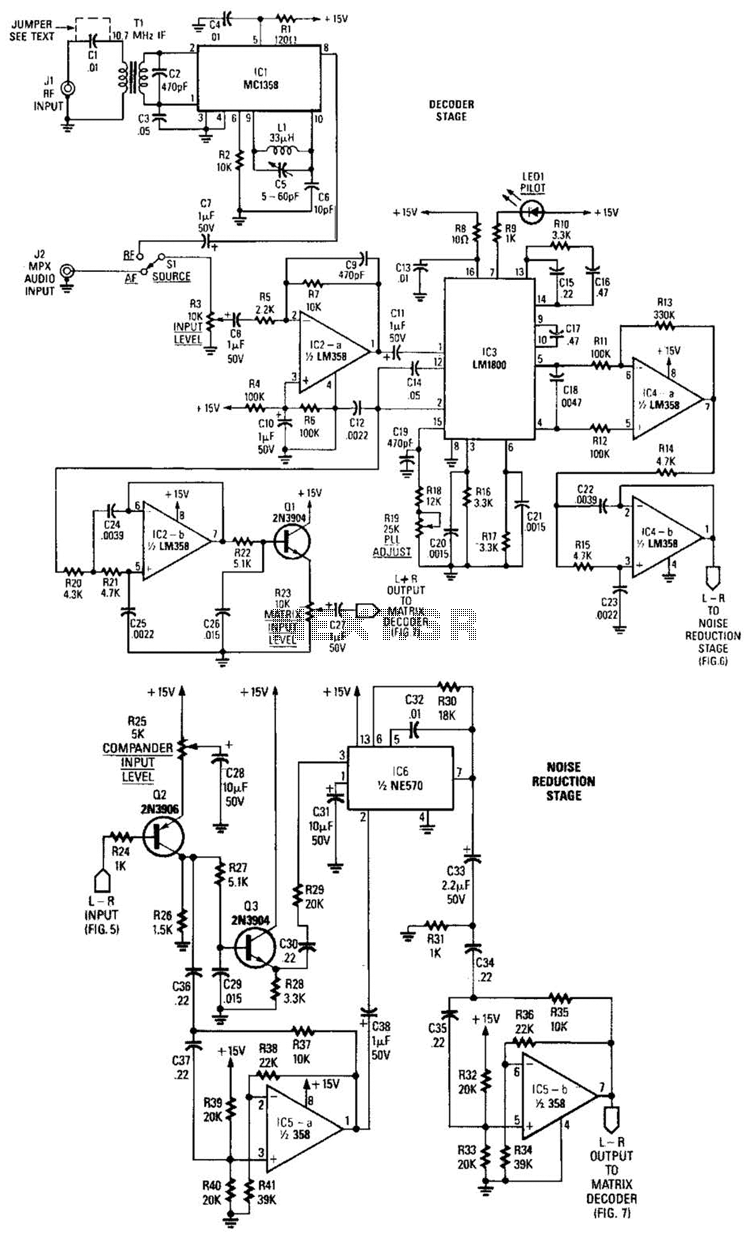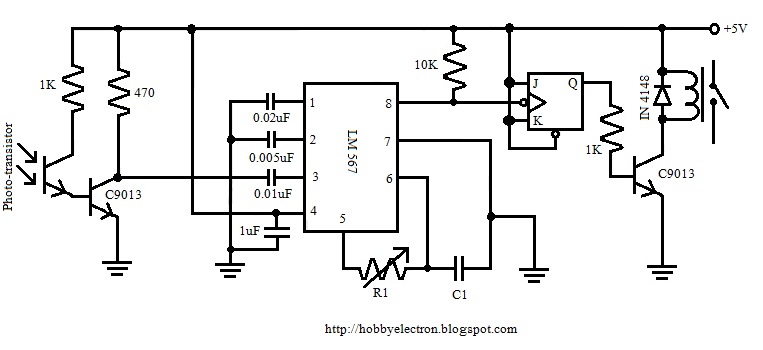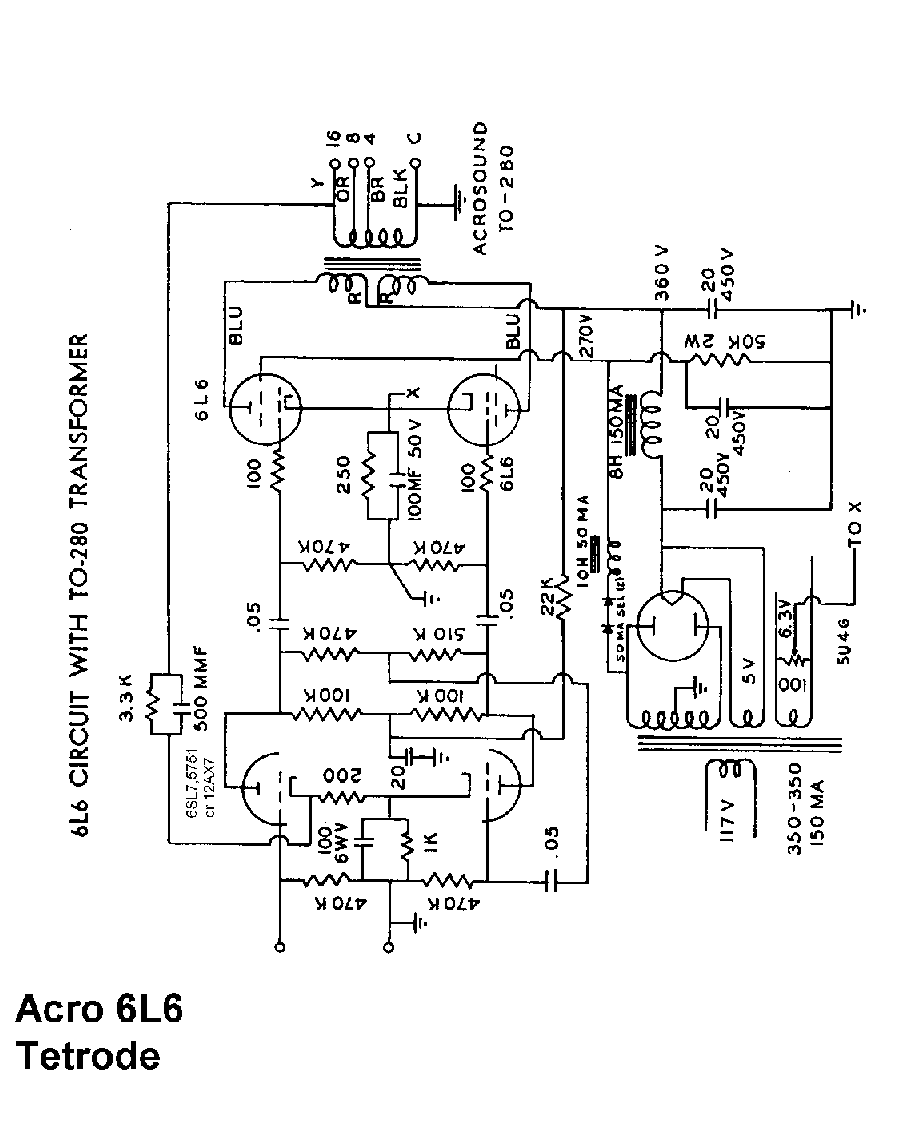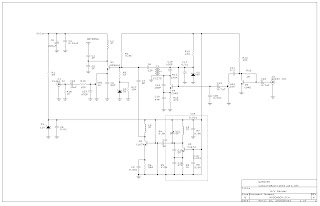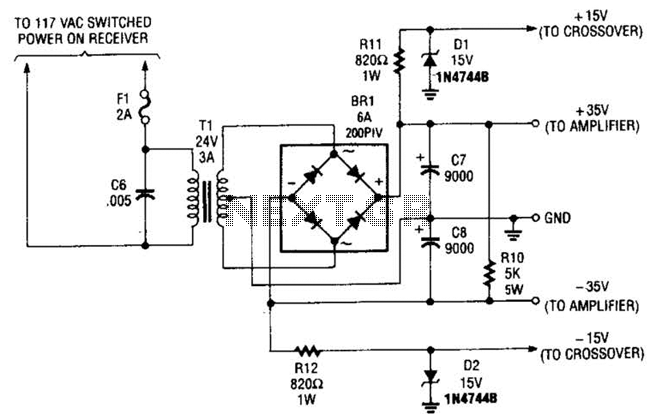
Video IF circuit TV Schematic Diagram
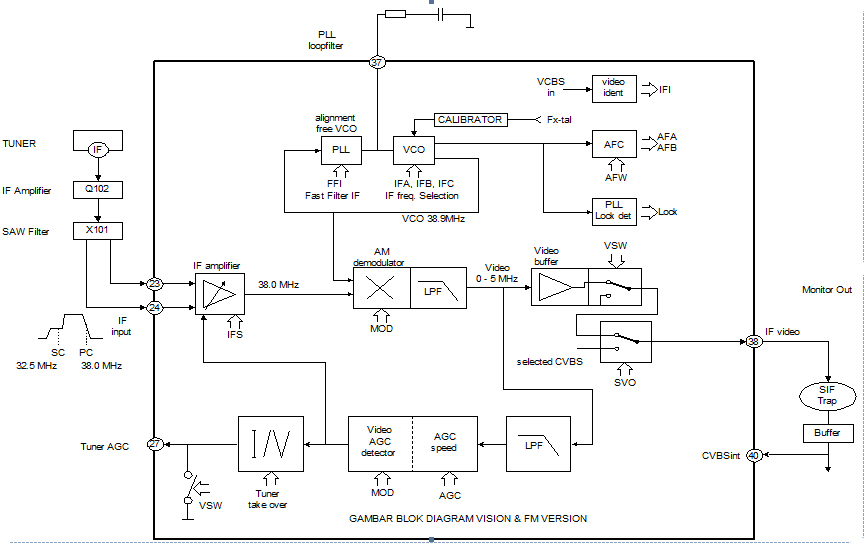
This section is designed to amplify the signal until it reaches the required level. The IF amplifier is equipped with an Automatic Gain Controller (AGC) that regulates the amplification to ensure a constant amplitude output for the video. The amplifier operates within a frequency range of 32 to 60 MHz, making it suitable for multi-standard applications. The IF signal is separated using a Phase-Locked Loop (PLL) detector, which generates a phase reference signal aligned with the IF signal carrier. The bandwidth of approximately 60 kHz is determined by the PLL loop filter on pin 37, achieved by comparing the frequency of the demodulation reference signal with the incoming IF signal. A reference frequency of 38.0 MHz is produced by the Voltage-Controlled Oscillator (VCO). The appropriate VCO frequency is established through system calibration, utilizing a crystal as a reference. The PLL can detect the IF frequency within a range of ± 1 MHz based on the Frequency Phase Lock Loop System (FPLL), which provides an output signal to the PLL loop filter for the resulting difference frequency. When the phase of the IF signal aligns with the reference signal, the signal is forwarded to the demodulator. The demodulator manages both positive and negative modulation, with selection made via the IIC bus. A low-pass filter following the demodulator output eliminates unnecessary demodulation artifacts, ensuring only the processed video signal is retained. The video buffer generates a video output with the appropriate amplitude while protecting against noise peaks. The bandwidth for the video buffer is at least 6 MHz. Within the video signal, there are components such as a white spot clamp buffer (for positive modulation) and a noise inverter clamp (for negative modulation), which maintain the amplitude of the video within typical limits.
The described circuit is a Video Intermediate Frequency (IF) circuit designed for television applications. The architecture consists of several key components that work in unison to ensure high-quality video signal processing. The IF amplifier, with its AGC, plays a critical role in maintaining a stable output by adjusting gain dynamically in response to varying input signal levels. This is essential for multi-standard applications where signal characteristics may vary widely.
The PLL detector serves as a crucial element in separating the IF signal from the carrier, allowing for accurate demodulation. The phase reference generated by the PLL ensures that the demodulator can effectively retrieve the original video information from the modulated carrier. The VCO's performance is pivotal, as it must be finely calibrated to generate the correct reference frequency, ensuring optimal PLL operation.
The demodulator's ability to handle both positive and negative modulation types allows for flexibility in signal processing, accommodating various modulation schemes used in broadcasting. The IIC bus interface provides a means for digital control over the modulation selection, facilitating integration into more complex systems.
Post-demodulation, the low-pass filter is essential for cleaning up the output signal by removing high-frequency noise that could interfere with video quality. The video buffer's design is particularly focused on maintaining signal integrity, with its specified bandwidth ensuring that the full range of video frequencies is preserved while preventing distortion from noise peaks.
The inclusion of clamping circuits within the video processing path is a critical feature that helps maintain signal amplitude within defined limits, preventing distortion that can arise from signal swings exceeding typical levels. This careful design consideration is vital for producing a reliable and high-quality video output suitable for television applications.This section serves to strengthen the signal until the signal level is required. IF amplifier is equipped with AGC (Automatic Gain Controller) which controls the strengthening of the IF amplifier so that a constant amplitude output video. Amplifier frequency range from 32 ~ 60 MHz makes this amplifier suitable for applications multistandar.
IF sig nal is separated with the help of PLL detector. PLL detector produces a phase reference signal with the IF signal carrier and about 60 KHz bandwidth is determined by PLL loopfilter pin 37. Obtained by comparing the frequency demodulation reference signal with the incoming IF signal. Are required reference frequency (38. 0 MHz) generated by the VCO. Appropriate VCO frequency is determined by system calibration using the crystal as a reference. PLL can detect the IF frequency up to ± 1 MHz based on FPLL (Frequency Phase Lock Loop System) which will provide an output signal to the PLL loopfilter for the difference frequency is obtained.
If the phase IF signal with a reference signal, the signal is transmitted to the demodulator. Demodulator to control the positive and negative modulation, the selection made by the IIC bus. Low pass filter after the output signal demodulator eliminates the demodulation is not required to process the video. Video buffer to produce a video output with an amplitude of the right and keep the video output from the noise peak occurring.
The bandwidth of the video buffer at least 6 MHz. In the video there are White spot clamp buffer (for positive modulation) and the noise inverter Clamp (for negative modulation) which keeps the amplitude of the video does not exceed the typical price. You are reading the Circuits of Video IF circuit TV And this circuit permalink url it is 🔗 External reference
The described circuit is a Video Intermediate Frequency (IF) circuit designed for television applications. The architecture consists of several key components that work in unison to ensure high-quality video signal processing. The IF amplifier, with its AGC, plays a critical role in maintaining a stable output by adjusting gain dynamically in response to varying input signal levels. This is essential for multi-standard applications where signal characteristics may vary widely.
The PLL detector serves as a crucial element in separating the IF signal from the carrier, allowing for accurate demodulation. The phase reference generated by the PLL ensures that the demodulator can effectively retrieve the original video information from the modulated carrier. The VCO's performance is pivotal, as it must be finely calibrated to generate the correct reference frequency, ensuring optimal PLL operation.
The demodulator's ability to handle both positive and negative modulation types allows for flexibility in signal processing, accommodating various modulation schemes used in broadcasting. The IIC bus interface provides a means for digital control over the modulation selection, facilitating integration into more complex systems.
Post-demodulation, the low-pass filter is essential for cleaning up the output signal by removing high-frequency noise that could interfere with video quality. The video buffer's design is particularly focused on maintaining signal integrity, with its specified bandwidth ensuring that the full range of video frequencies is preserved while preventing distortion from noise peaks.
The inclusion of clamping circuits within the video processing path is a critical feature that helps maintain signal amplitude within defined limits, preventing distortion that can arise from signal swings exceeding typical levels. This careful design consideration is vital for producing a reliable and high-quality video output suitable for television applications.This section serves to strengthen the signal until the signal level is required. IF amplifier is equipped with AGC (Automatic Gain Controller) which controls the strengthening of the IF amplifier so that a constant amplitude output video. Amplifier frequency range from 32 ~ 60 MHz makes this amplifier suitable for applications multistandar.
IF sig nal is separated with the help of PLL detector. PLL detector produces a phase reference signal with the IF signal carrier and about 60 KHz bandwidth is determined by PLL loopfilter pin 37. Obtained by comparing the frequency demodulation reference signal with the incoming IF signal. Are required reference frequency (38. 0 MHz) generated by the VCO. Appropriate VCO frequency is determined by system calibration using the crystal as a reference. PLL can detect the IF frequency up to ± 1 MHz based on FPLL (Frequency Phase Lock Loop System) which will provide an output signal to the PLL loopfilter for the difference frequency is obtained.
If the phase IF signal with a reference signal, the signal is transmitted to the demodulator. Demodulator to control the positive and negative modulation, the selection made by the IIC bus. Low pass filter after the output signal demodulator eliminates the demodulation is not required to process the video. Video buffer to produce a video output with an amplitude of the right and keep the video output from the noise peak occurring.
The bandwidth of the video buffer at least 6 MHz. In the video there are White spot clamp buffer (for positive modulation) and the noise inverter Clamp (for negative modulation) which keeps the amplitude of the video does not exceed the typical price. You are reading the Circuits of Video IF circuit TV And this circuit permalink url it is 🔗 External reference
